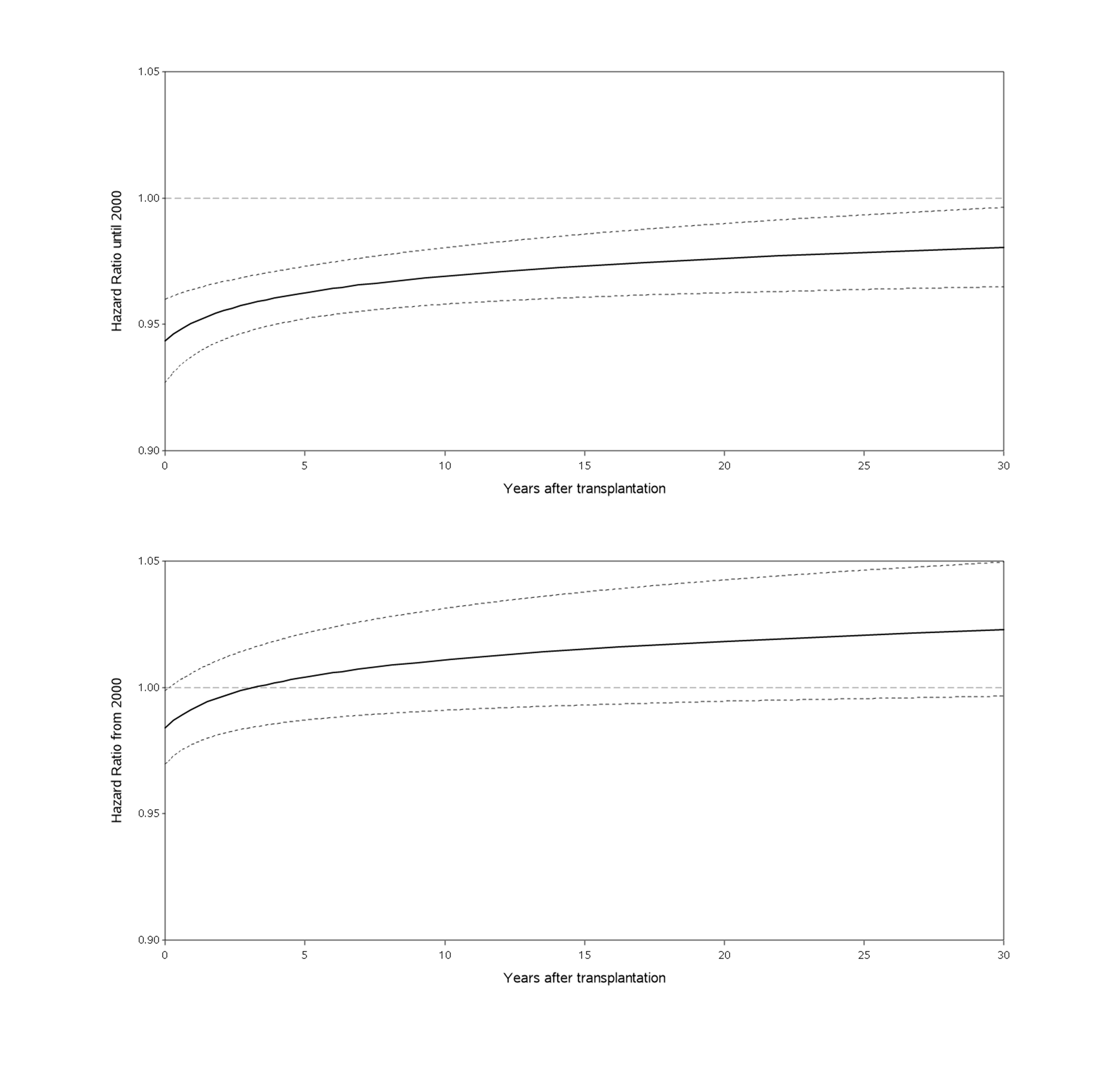Short- and Long-Term Graft Survival After Kidney Transplantation in Western Europe.
1Microbiology and Immunology, KU Leuven, Leuven, Belgium
2Nephrology and Renal Transplantation, KU Leuven, Leuven, Belgium
Meeting: 2017 American Transplant Congress
Abstract number: A111
Keywords: Graft failure, Graft survival, Kidney, Survival
Session Information
Session Name: Poster Session A: Deceased Donor Issues I: Allocation, KDPI and Recipient Selection
Session Type: Poster Session
Date: Saturday, April 29, 2017
Session Time: 5:30pm-7:30pm
 Presentation Time: 5:30pm-7:30pm
Presentation Time: 5:30pm-7:30pm
Location: Hall D1
Background: Improvement of kidney survival after transplantation has mainly been studied in the American population. There, it was found that improvement mostly occurred on the short-term after transplantation. Since the European transplantation reality and survival times considerably differ from the American situation, we investigated changes in survival over the past three decades in Western Europe, accounting for the important changes in donor and recipient characteristics over time.
Methods: We performed a cohort study based on four large prospectively collected clinical databases in Western Europe, in transplants performed between January 1st 1986 and December 31st 2015. Analyses were restricted to adults and to deceased donors, leading to an inclusion of 10.688 single kidney transplantations. The primary outcome was the cause-specific (death-censored) hazard rate of kidney failure after transplantation. In the Cox model, we included a flexible time-dependent effect for the continuous covariate 'transplant year' in order to quantify improvement on both the short- and long-term. All estimates were adjusted for the changing demographics.
Results: There was significant improvement (p<0.001) in graft survival from 1986 to 2000, but no progression (p=0.525) was made after 2000 (figure 1). Also, improvement was more pronounced on the short-term than on the long-term after transplantation (p=0.003). These changes were conditionally independent of the changing donor and recipient age (both increased significantly with p<0.001). Conclusion: In Western Europe, similar to what was noted earlier in the US, improvement of kidney graft survival over the past decades occurred primarily on the short-term after transplantation, and to a lesser extent on the long- term. For the first time, however, we demonstrate that no improvement in graft survival was observed since 2000, even when taking into account the increased risk profiles of donors and recipients. Novel initiatives to further improve graft survival after kidney transplantation are urgently needed.
Conclusion: In Western Europe, similar to what was noted earlier in the US, improvement of kidney graft survival over the past decades occurred primarily on the short-term after transplantation, and to a lesser extent on the long- term. For the first time, however, we demonstrate that no improvement in graft survival was observed since 2000, even when taking into account the increased risk profiles of donors and recipients. Novel initiatives to further improve graft survival after kidney transplantation are urgently needed.
CITATION INFORMATION: Coemans M, Verbeke G, Anglicheau D, Bestard O, Giral M, Naesens M. Short- and Long-Term Graft Survival After Kidney Transplantation in Western Europe. Am J Transplant. 2017;17 (suppl 3).
To cite this abstract in AMA style:
Coemans M, Verbeke G, Anglicheau D, Bestard O, Giral M, Naesens M. Short- and Long-Term Graft Survival After Kidney Transplantation in Western Europe. [abstract]. Am J Transplant. 2017; 17 (suppl 3). https://atcmeetingabstracts.com/abstract/short-and-long-term-graft-survival-after-kidney-transplantation-in-western-europe/. Accessed December 27, 2025.« Back to 2017 American Transplant Congress
